Authors:
Steve Haley, director of market development and partnership, Mojaloop Foundation
Paul Makin, director, product management, Mojaloop Foundation
Michael Richards, financial services principal, Infitx
“Inclusion” in cross border transactions usually focuses on the remittance use case – lowering the cost and increasing access for migrant workers to be able to send money home. These workers often come from low income, rural communities and go abroad looking for ways to better support their families. Unfortunately, for many, taking another 10% in remittance fees means the difference between being able to provide for their loved ones and falling short on funds. But it’s not only remittances, small businesses lose heavily on cross border trade and underbanked migrants cannot make digital merchant payments.
And it’s not only the challenge of losing money on fees, it’s also about time. Because remittances are expensive and inconvenient, migrants often try to limit transfers back home to avoid high fees and a hassle-filled process. But this delay often means that families back home struggle. Small merchants wait the longest for funds to clear internationally, yet they have the tightest cash flow.
There is a global effort to reduce cross border remittance costs to no more than 5% for any corridor and no more than 3% for most (SDG 10.c and G20 Roadmap targets). We have a long way to go to get there – but we hope the final fees are actually lower. There are also targets on Access, however Cost and Access targets need to be much more closely linked. It is not enough for the “average” cost to go down – the cost for those with limited access is a far more important metric.
At Mojaloop, we believe that to achieve inclusive and efficient cross border payments that serve the last mile, we need a system re-design, and that system will have some specific characteristics. It will require a significant amount of global coordination for standards and consensus building. It also involves making design decisions that will explicitly change revenue structures for some financial institutions and fintechs, which could elicit some defensive reactions. Companies that see the economic value in increased volume and participation will be the drivers of change.
We believe that the best system is multilateral interoperability scheme(s) between domestic inclusive instant payment systems (IIPS).
Cross border schemes need to be multilateral utilities because all citizens need to have equal access, regardless of the size and resources of the country they are from. Countries like India and Singapore will always find willing counterparties and have the resources to develop and negotiate advantageous bilateral relationships, but small countries, just like small financial institutions, deserve a system that treats them as equals. With projects like Nexus[1] gaining traction, we believe that there is already a degree of consensus that this general approach is the way forward, but we need to dig into nuances of design to ensure inclusivity. There can be both global and regional multi-lateral schemes.
By domestic “inclusive” IPS, we mean that an IPS should make all efforts to include all citizens, and specifically all financial services providers, especially those that serve the last mile. This means it is a utility, supporting tiered KYC, lowering integration barriers, setting efficient liquidity controls, and providing other mechanisms to ensure that non-banks–particularly small rural institutions–are able to participate. It also should find ways to reduce overall costs so that the price to consumers can be as near zero as possible, like it is for most banked citizens in many developed markets.
We want to provide an environment in which any institution which is regulated by the jurisdiction in which it operates can participate in a payments network on the same terms as any other institution. Regulation is fundamental to this vision: we expect and encourage jurisdictions to innovate on ways to regulate small and relatively informal account-holding institutions to make sure that their account holders, and the institutions themselves, are properly protected from criminals and frauds. But once the institution is regulated, we want to make sure that it can deliver funds to its customers, no matter where in the world the funds started their journey.
In this context, we still need to define how systems like these interoperate with each other. A domestic system that includes all accounts, including those held at non-banks, must be able to offer a clear, reliable and low-cost way for those customers to transact both domestically and with more bank-centric schemes in other countries.
To achieve this vision, there are a lot of details that need to be worked out.
Focus
We have identified five priority areas for investigation and discussion. For some of these, we have proposed solutions that we would like to get wider market input on to see if they might be viable design choices. If any of these five areas are interesting to you, please email me at shaley@mojaloop.io!
- Defining success.
The FSB[2] and G20[3] have set targets for cost, access, speed and transparency. Cost goals are averaged across all channels and access goals do not include standards for cost and transparency. In other words, if price for wealthy urban citizens decreases and rural underbanked clients get access to expensive non-transparent digital options, we’ll still hit those goals. One simple way in which results and targets could be focused on the activities of the poor rather than the rich would be to measure all targets and results by number of transfers, not by aggregating the value of transfers. We want to measure inclusivity – which means that we have to ensure that we look at the cost incurred by low income users specifically. We believe that means that whether the funds are going to an urban bank, a mobile wallet, or a small rural credit union, there is no difference in experience or price for the sender. We need to understand our success further, though. Such as, should these non-bank accounts need to be expanded to look like bank accounts or will they be allowed to participate “as is” at lower velocity levels? Should we develop mechanisms to assist in small FI participation, or will we leave it up to each scheme, or each financial institution?
- Addressing
Sending money across borders presents many challenges, but one important challenge is that of addressing; how do you send the money to someone’s preferred account? If it’s a mobile wallet, this is straightforward in many countries: the payment can simply be addressed to the mobile phone number. But this doesn’t work everywhere – for example, in many Asian countries, it’s commonplace to have multiple mobile wallets on a mobile phone, so which one should the money be deposited in? And if we want the money to go into a bank account or a microfinance account, how do we route that?
We think that the answer lies in the use of an interoperable alias resolution service, such as the Proxy Addressing System Service (PASS) proposed by The United Nations Capital Development Fund (UNCDF). This service envisages taking a simple payee alias and seeking to resolve it across multiple national alias resolution services, in order to return the payment routing details for the payee. We are currently exploring the option of taking part in a proof of concept of PASS with UNCDF and others.
To learn more about UNCDF’s work in the space, download the organization’s exploratory paper, “Open Regulated Global Payments Inter-Network.” Additionally, UNCDF is preparing to publish a handbook designed to guide policymakers who are enabling or involved directly in cross-border payment model implementation, which will serve as an additional resource in the space.
- Messaging
All IPS switches must be able to route transactions and communicate in the same language. We support ISO 20022 for this, but there’s a need to address several challenges for inclusivity. First, ISO 20022 isn’t actually a payments standard, but “a common platform for the development of messages” and must be supplemented by sector-specific Message Definitions. Adoption of ISO 20022 messaging is piecemeal. Most small or medium sized banks and non-banks have not adopted natively ISO 20022 messaging (and frankly never will).
We are proposing changes to address risk management and the ability to integrate with the non-banks. In particular, we believe that reducing the number of failed transactions, a major cost for cross border payments, is best achieved through a two-phase transaction that performs all checks and signs a transaction prior to funds leaving the sender’s account. We are working with the ISO 20022 Payments Standards Evaluation Group to develop some extensions to the Message Definitions to support inclusive instant payments.
- Compliance
Even more so than domestic transactions, international payments are subject to close monitoring and compliance requirements, according to domestic regulations developed in accordance with the international FATF[4] Recommendations. Sending institutions, switches and other intermediaries have a responsibility to transport metadata along with the transaction, so that receiving institutions can meet their own compliance obligations.
We are exploring with UNCDF the possibility of extending the PASS service, used during account discovery before any transaction is initiated, to create a compliance history and allow sanctions screening to take place before any transaction is proposed. This would further allow the overall cost of transactions to be reduced by dissociating screening from transactions. We would welcome collaboration from other organizations such as FATF, the Alliance for Financial Inclusion[5], and other international organizations.
- Settlement.
Settlement of transactions is always one of the most complex parts of an international payment. Traditionally this is done by correspondent banking relationships, with funds in “foreign” currencies being held in banks in nostro/vostro accounts, and being used in settlement of transactions often through an international reserve currency such as the US Dollar.
Many proposals, including most of those based on cryptocurrencies and blockchains, still fundamentally rely on correspondent banking, though this may not be apparent without close inspection.
Not all financial institutions can connect directly to a switch, particularly for international payments. In particular, non-banks, such as mobile wallets and credit unions, will find it difficult to obtain regulatory approval for such an integration. Domestically, we address this by supporting indirect settlement (small FIs settle through large banks), however, establishing standards for indirect settlement would drive the cost of these relationships lower.
Conclusion
The future of inclusive cross border payments is complex. There are a lot of moving pieces and business interests. We’re aiming to remove ourselves a bit and focus on what would be the most efficient and cost-effective way to serve the most difficult to reach communities around the world; the smallest communities and the smallest countries. In our view, this means focusing on efforts to link domestic inclusive instant payment systems. Those linkages must be built with intentionality to capture the inclusive nature of the domestic systems and products.
If you want to join the discussion – send me a note at @mojaloop.io.
[1] https://www.bis.org/about/bisih/topics/fmis/nexus.htm
[3] https://www.fsb.org/2023/02/g20-roadmap-for-enhancing-cross-border-payments-priority-actions-for-achieving-the-g20-targets/

